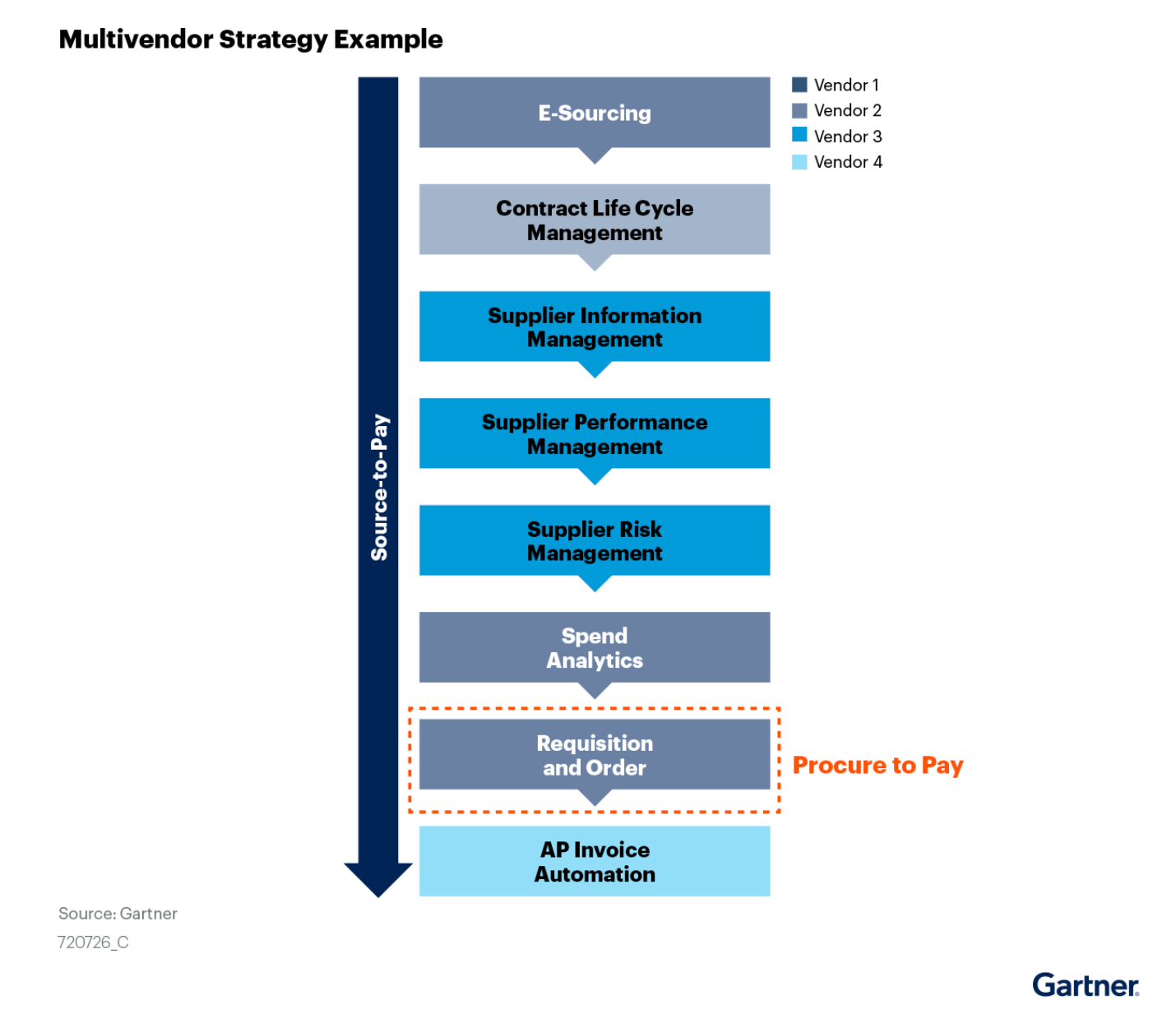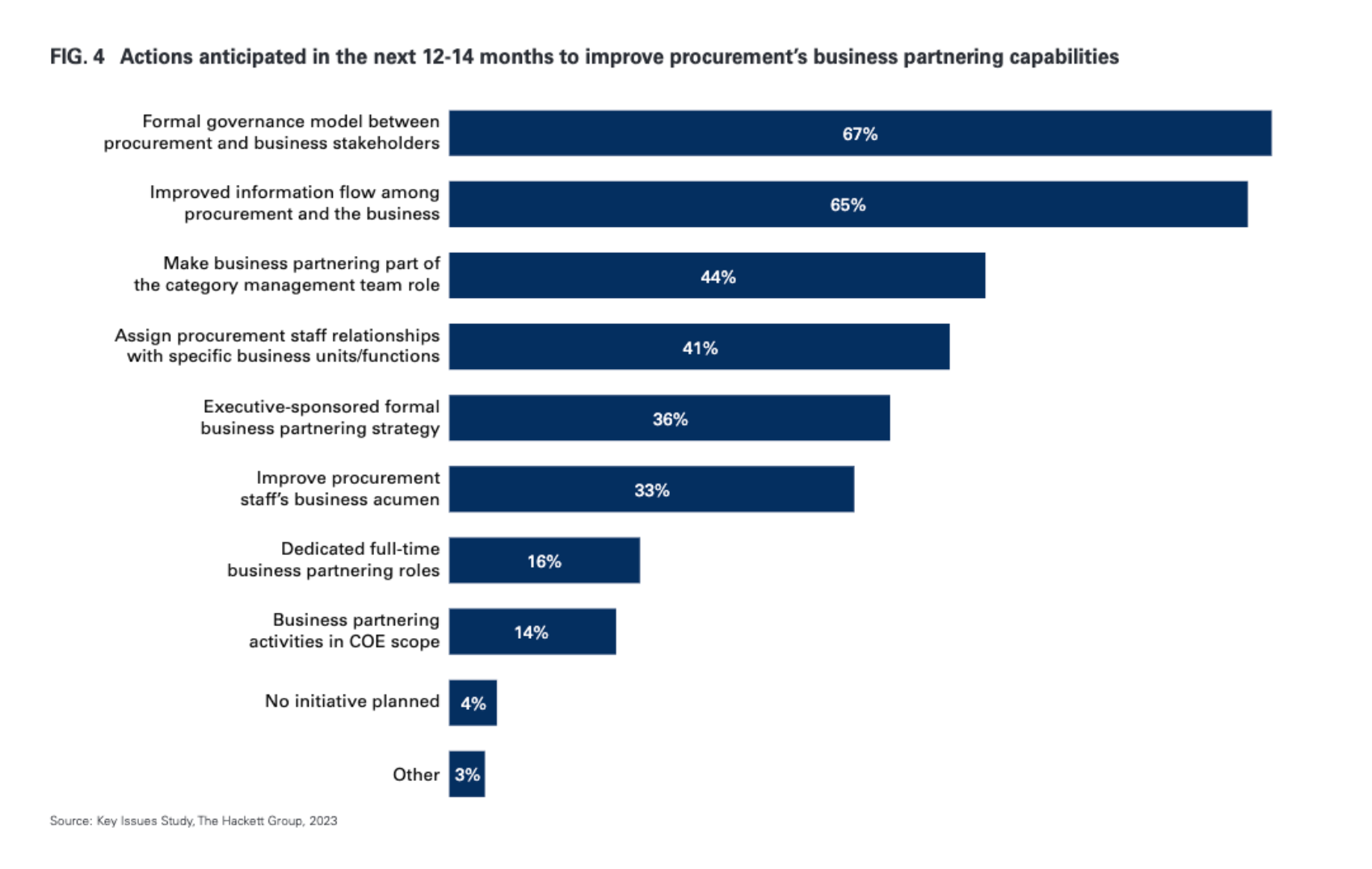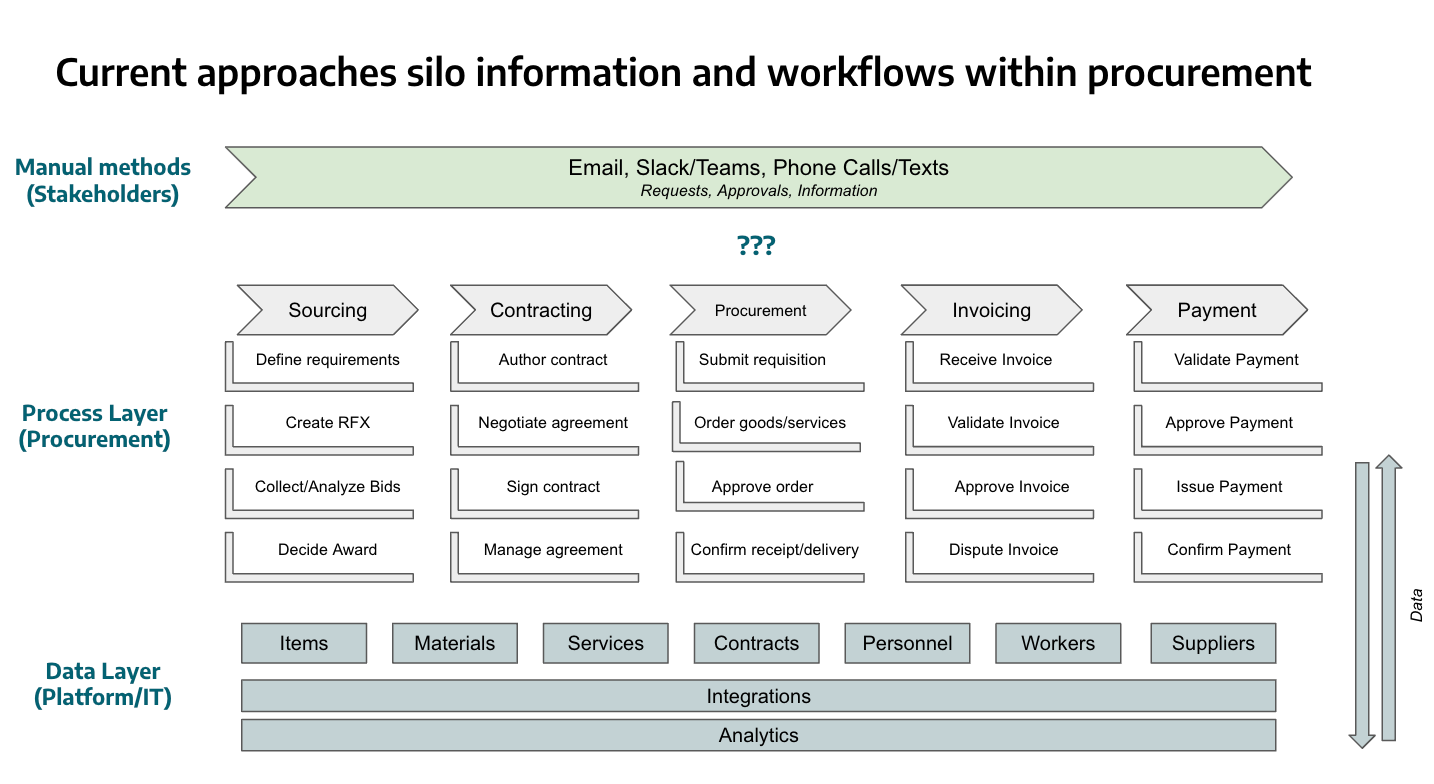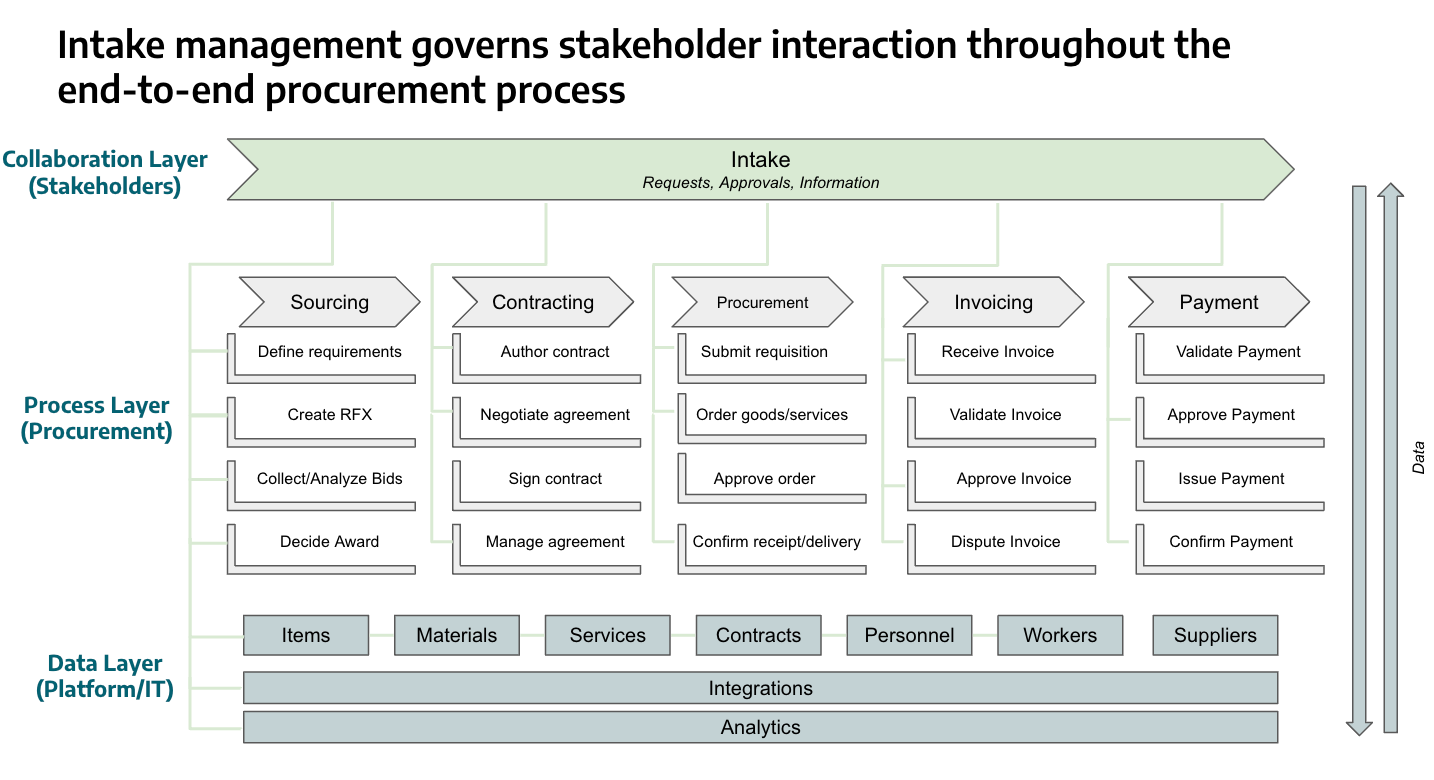Tech stack fragmentation is holding procurement back
Today's finance-procurement tech stacks work — just not for everyone who uses them. The gap in experience is creating a barrier between procurement and its vision to be a strategic partner.

If you believe the headlines, we’re about to enter a new golden era of technology. Generative AI is about to burst into every process and product you use as subtly as the Kool-Aid Man; no-code platforms and open APIs will make everything fantastically configurable and interoperable with no headaches, right?
Maybe that’s true, to some extent. Things are changing fast in the world of enterprise technology — so fast, in fact, that we aren’t being given the time we need to clean up the messes all of the previous changes have left behind.
In the finance and procurement corner of that world, the mess that comes to mind is one of fragmentation. Despite the long-term trend of different categories consolidating into suites, today it feels like there are apps proliferating everywhere.
And therein lies the disconnect. Today, most finance and procurement teams have established tech stacks, yet they're also acknowledging that while these tech stacks work, they still leave gaps in experience and business alignment for the purchasing process. Which is a big problem, because those gaps will hold finance and procurement leaders back from contributing where their businesses need them most if they can't be closed.
Fragmentation: how we got here
It’s no secret that there are honestly too many options out there for finance and procurement technology. As the pandemic forced increased virtualization and automation, investor interest poured into the space and enabled the rise of dozens of new companies. Individual markets began to form their own submarkets. Take, for example, supplier management, a market so fragmented that the way I was taught to talk about the market while at Spend Matters was to call it all "SXM" to accommodate for the endless variants that could occupy the X (information, performance, relationship, risk, quality, onboarding, etc.).
Case in point, some of the most boisterous conversations around technology for finance and procurement today revolve around the fact that many market maps have come to resemble a Rorschach test of logos:
But it’s not just the overwhelm that’s the problem. It’s actually that the old mindset — that is, the classic “suite vs. best of breed” debate — is increasingly becoming passé. Because the question isn’t whether to standardize on a single platform or combine multiple tools anymore. Instead, the standard recommendation from the analysts who have watched this all unfold is that, in most cases, you need to have a combination of a core platform and others related tools to build a workable finance/procurement tech stack.

This Gartner chart is from a report on assessing the risk and value of procurement applications (you can check it out for free at the link). To summarize, the idea that you can standardize the whole source-to-pay process on a single solution these days is now not recommended. Rather, the tools you pick for various parts of the process will need to align with the stakeholders who are key co-owners or users in that process. And the capabilities that users in, for example, accounting and treasury or legal need to make their part of the purchasing process work may not be deeply covered by an S2P player. As Gartner put it:
“Well-meaning procurement or technical policies that focus on limiting solution vendors makes intuitive sense — fewer vendors equals less complexity. The problem is that no vendors, not even the leading ERP suite vendors, can provide a highly integrated, deeply functional, end-to-end solution. This functional, integration, end-to-end trade-off is one that many organizations can successfully make while not impacting the value of the solution.”
On a functional level, this is largely true. Parts of your S2P process can be fragmented into multiple solutions without diluting the value of the S2P or P2P solution. But there is another trade-off that finance and procurement leaders make when they take this approach that they need to consider.
Fragmentation complicates collaboration
No matter what configuration you have for your tech stack, there’s one universal truth: the stakeholders who need to interact with that tech stack will do the minimum work possible to understand and interact with that setup.
This isn’t a rejection of your processes and systems; it’s just the reality of how non-finance/procurement stakeholders approach their jobs. Unless there is a crystal clear procedure for where to go and how to get procurement requests seen, approved, and executed, getting buy-in is going to be an uphill battle.
In our own research talking to dozens of finance and procurement leaders about where their processes break down, there’s a recurring theme in the conversations. See if you can pull it out:
- “The intake process for requests in our current system is very painful and not user friendly.”
- “We need to ensure ease of use for approvals for all Procurement Committee members.”
- "We want to be able to find our vendors easily and track the product catalog and renewals."
- "Vendor onboarding is a very manual process. We have to collect all documentation via email."
- “Some people prefer to use our standard system to communicate, others use Slack. There is a lot of confusion on where to go and where the updates live.”
The kicker? Many of these leaders already have systems in place. Their tech stacks work, but they work specifically for them. For their stakeholders, the same is less often true.
As we found in our own 2023 B2B Purchasing Trends survey earlier this year, finance and procurement leaders know this. Nearly one-third (32.1%) of respondents said their B2B purchasing process is broken, and only 20.9% said the process is working “very well” and that they are not looking to make any changes. The root cause is abundantly clear: employee experience and perception of procurement processes need to be fundamentally improved before anything will get better:
This is where things get really challenging. This gap in how employees experience purchasing processes is not just a process-specific problem; it’s a barrier to strategic influence by finance/procurement altogether.
Governance: the missing puzzle piece
One of the most uncomfortable statistics about procurement that came out of the pandemic was from a retrospective report from Kearney. In its Assessment of Excellence in Procurement study (2022), the firm looked back on procurement’s pandemic performance and found a sobering conclusion. While c-suites recognize and appreciate procurement’s firefighting efforts over the past few years — 92% of CFOs said they felt procurement has met or exceeded expectations for controlling costs under historically challenging circumstances — their core perception of procurement is unchanged. Looking forward, only 31% of CFOs and CXOs said procurement is able to proactively drive their strategic agendas.
This gap in execution and perception reminds me exactly of the experience-perception gap above. There’s no doubt that technology has improved finance and procurement performance, and both functions are better off now than they were a decade ago in terms of productivity, ability to execute, and overall value. Yet the perception of procurement specifically and its ability to influence the strategic agenda will not improve until it fills this communication and collaboration gap that prevents it from being perceived as a true business partner.
Hearteningly, though, forward-thinking leaders are aware of this. One of the more surprising trends recently has been an increased focus on a term that sounds dull but in reality can bring a lot of value: governance.
Yes, really. Governance is the key to bridging this experience and collaboration gap, because its place in the finance-procurement operating model is to bridge established policy with the granular processes codified in those tech stacks. As Gartner puts it in the formal definition:
“Procurement governance is the set of best practices and rules that helps the procurement function determine processes for completing its workflows.”
What is that if not a summary of the issues that finance and procurement face from their tech stack fragmentation problem?
Which is why this term, seemingly dry on the surface, is gaining traction as a top-of-mind priority for finance and procurement chiefs. One leading indicator that popped up recently is The Hackett Group’s 2023 Key Issues study. If you dig into the meat of the report, you’ll find that governance is one rising areas of focus for teams to improve their perception as a true business partner. Look at this result for the key priority of acting as a strategic advisor to the business:

Both of the top results concern procurement’s ability to unify stakeholder interaction and information with current policy and process. Or, in a word, governance.
Bringing Governance to Stakeholders
If the priority now for fixing this problem born of fragmentation is to establish clear governance that dictates the roles, actions, and information flows between finance/procurement and the rest of the business, the natural next question is how to do that.
To me, the flaw that got us to this point is that most technology in the finance/procurement tech stack today is designed for and from the point of view of someone in that department. The conceived users have never been the stakeholders themselves. Yet to get their collaboration and information, there needs to be a system of coordination that governs those interactions and is built with those users' intentions in mind.
If you were to visualize this problem, it’s this: the source-to-pay process flows in a siloed layer, and stakeholders outside of it default to manual methods (email, text, phone, etc.) to figure out how to interact with the layer below.

To solve this, we need a layer that governs information requests/flows, interactions, and approval processes at the specific steps and substeps in the procurement cycle where stakeholders are needed. It's like the traffic laws that live in everyone’s heads — you know what to do at a four-way stop sign, and it’s clear to everyone who does what and when to prevent an accident.

To be sure, the collaboration gap between procurement and the rest of the business can’t be solved overnight. But there is a clear path forward: that fragmented tech stack needs to begin to be unified, and figuring out how you’re going to realize the governance imperative — whether through intake or some other approach — is the first step in that journey.
Enjoy this newsletter?
Sign up yourself if this was forwarded from a friend or colleague.
Need help with something? Hit reply to send us research questions or to say hello. We love to trade notes!
Interested in hearing more from Zip? Visit our website or sign up for company updates.
Note: By clicking subscribe you confirm that you have read and understood the Zip Privacy Notice that explains how we collect and use your personal information, and includes directions on opting out from our newsletter. If you have any questions, please reach out to privacy@ziphq.com.